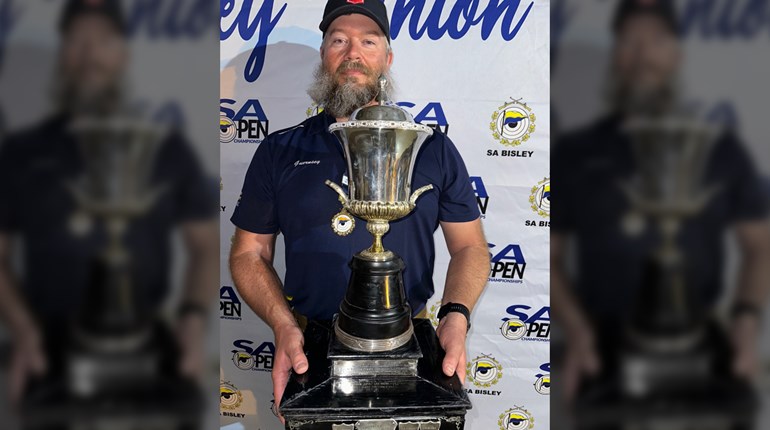
Same goes for the .44 Rem. Mag. Adding "Magnum" to a cartridge name gives it that extra bit of wickedness.
It doesn't always work. When Federal introduced the .32 H&R Mag. in 1984, the buzz waned swiftly when folks realized there wasn't much Magnum to it. Only loaded to a pressure of 21,000 copper units of pressure (CUP), it's well below the 35,000 CUP of the .357 Mag. It isn't even a true .32 caliber. It shoots a .312-inch bullet like the .32 ACP, but thirty-one doesn't sound as charming as thirty-two. Just ask Franco Harris, Jim Brown and O.J. Simpson (sorry, scratch the last one). The .32 H&R Mag. was misnamed in caliber and performance.
We shouldn't hold that against it. The .38 Spl. is only loaded to 17,000 PSI and actually shoots a .357 caliber bullet, not a .38. Nobody cares—even when they load .38 Spl. cartridges in a .357 Mag. revolver. The .44 Rem. Mag., held in high esteem by those who have shot it or been shot with it, uses a .429-caliber bullet instead of a .44. Nobody cares about that, either.
I've heard many comment that they feel the 9 mm is not big enough and they'd rather have a .38 or .357. Guess what? A .38 or a .357 bullet is exactly .002 inch larger in diameter than a 9 mm bullet. I can't even see stuff .002 inch in size. On top of that, most 9 mm ammo has a higher velocity than .38 Spl. ammo and 9 mm +P+ ammunition is right on the heels of the .357 Mag.
And about +P ammunition; +P stands for more power (read higher pressure). More power always means more recoil, but it won't necessarily stop warlocks and witches quicker. It might, depending on the bullet, but often that extra velocity reduces penetration because the bullet expands more.
Plus P or not, the 9 mm Luger, aka 9 mm Parabellum, got its name from the pistol introduced with it in 1902. Parabellum comes from the Latin saying "si vis pacem, para bellum," meaning, "If you wish for peace, prepare for war."
The 9 mm Luger is also known as the 9x19 mm; 9 mm for the caliber and 19 mm for the length of the cartridge case. But, it's not exactly a 9 mm. Nine millimeters equals .3543 inch. That's .0007 inch less than the actual .355-inch bullet a 9 mm fires. It's close—closer than .452 is to the .45 caliber designation of the .45 ACP, also known as the .45 Auto. It's also closer than .308 is to .30 caliber. Inaccurate names are not just confined to defensive handgun cartridges.
The .223 Rem. is probably the most popular cartridge in the world. It fires a .224-inch bullet. It's also known as the 5.56x45 mm or the 5.56 NATO. Yes, the .223 Rem. and the 5.56 NATO are the same. The difference lies in the pressure to which each is loaded and the way the throat is cut in the respective rifles. The 5.56 NATO is kind of a .223 Rem. +P. So, why they don't call it that?
The 5.56 NATO's historical adversary, the 7.62x39 mm, may be the worst mess. Instead of a .30-caliber bullet as the designation would have you believe, it's loaded with a .311-caliber bullet. Hey, it's almost a thirty-two, um, .312-caliber. Interestingly, some manufacturers load .308-inch bullets in this cartridge and there are some 7.62x39 mm rifles that have .308-inch barrels. It has been my experience neither the cartridges nor the rifles care about the bullet or the slight differences in barrel diameter. Accuracy is about the same regardless. I know, I know...weird ain't it?
Maybe the most aptly named cartridge is the .40 S&W. It fires, believe it or not, a .40-caliber bullet and was designed by Smith & Wesson. Actually, the cartridge was conceived by Smith & Wesson, designed by Winchester and somewhat influenced by the FBI.
A name, any name, can mean a lot or very little. My birth certificate reads, "Richard Allen Mann II." My father's name was Richard, but everyone called him "Dick" which is a unique nickname for the English-originating Christian name of Richard, which is supposed to mean power. After I was born, people referred to my father as the largest of the Richards in the family. Use your imagination and you can probably figure out what I had to endure. Those who cared about my self-esteem called me "Dickie" and close family members still do. I didn't like it much, but I got over it.
In the Army it was "Mann," when I was a cop it was "Officer" or something unprintable. Today, it's mostly Dad, Honey or some slanderous moniker it's best I do not disclose. My point is, what something is called does not always clearly represent what something is. Cartridge names may not be perfect, but cartridges aren't either, and they don't care. Cartridges don't have feelings.
It's shooters who think names are so important. But, with age comes wisdom. I like being Richard and don't much mind being called "Dick" anymore. I don't really care what the cartridge I'm shooting is called, either.
In the end, cartridge names are really nothing more than marketing. The Germans figured this out with the 9 mm Parabellum—if you wish for peace, prepare for war—how cool is that? All shooters need be concerned with is to make sure what's printed on the cartridge case matches what's printed on the firearm. That's why those letters and numbers are there. Some cartridge names are cool, but their names have no influence on how deadly the cartridge is and, in many cases, they don't even reflect actual dimensions. Same goes for people, too.




































